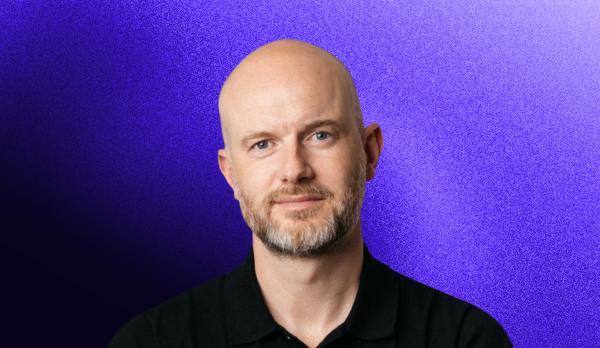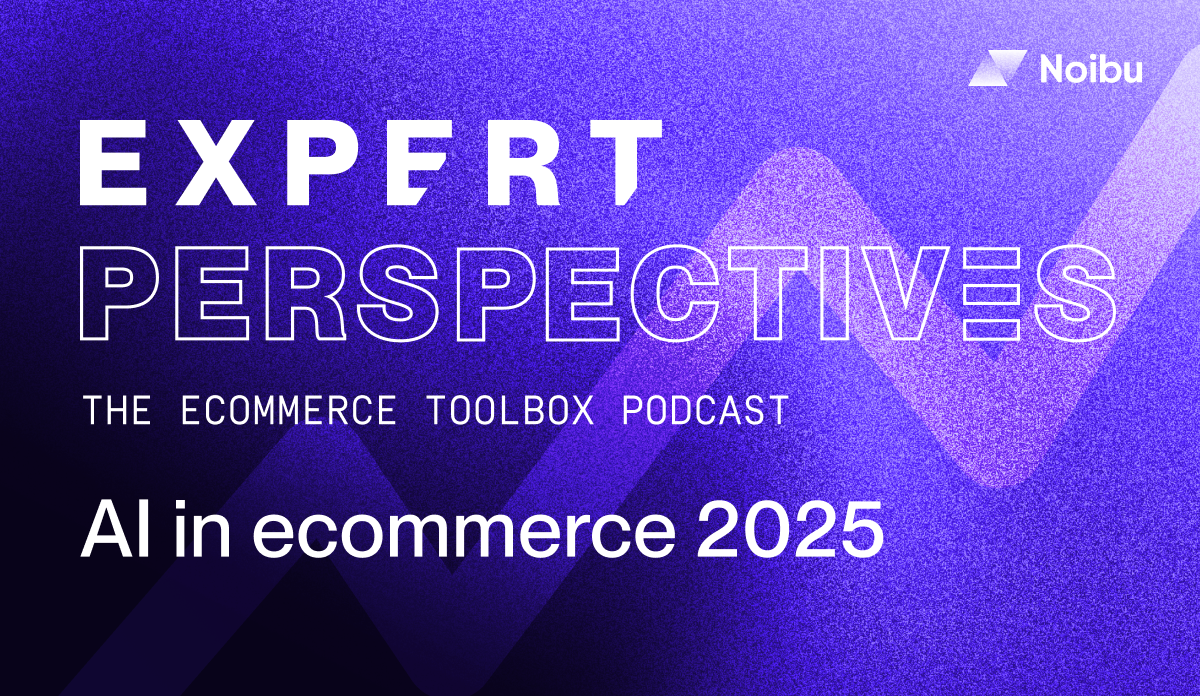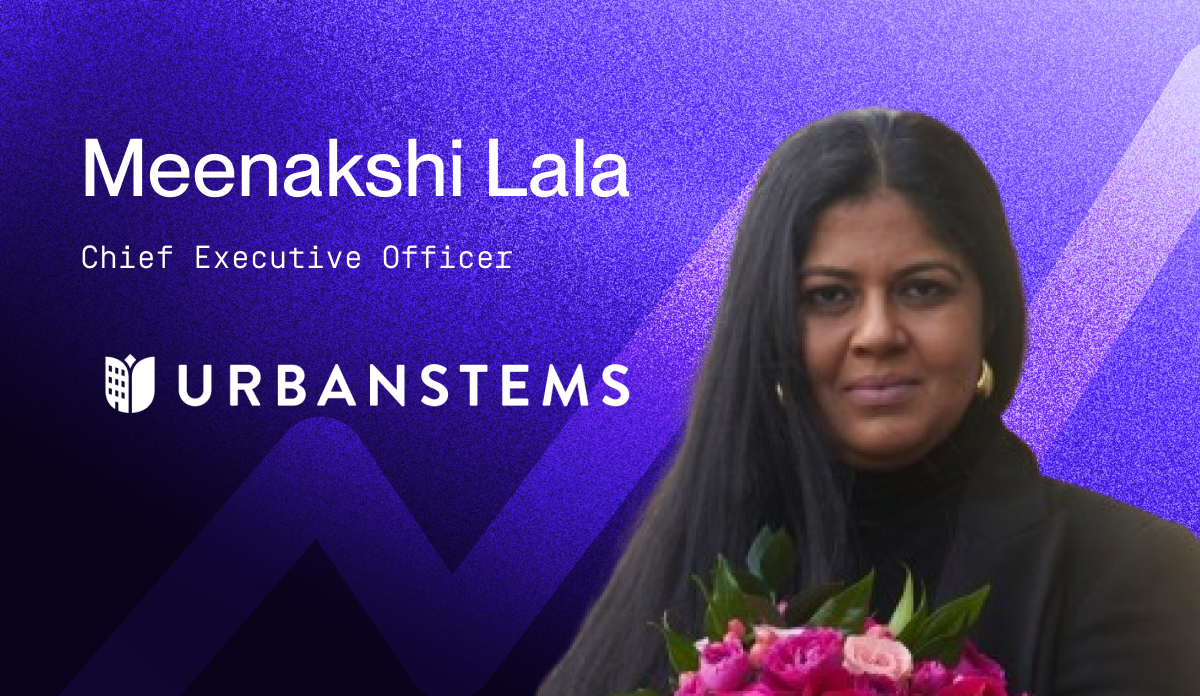Expert Perspectives
Expert Perspectives
Episode 105


In this episode we talked about:
- How Furniture.com evolved from a CPC model to a full-service marketplace with 70+ partners
- Why standardized product data is the foundation of marketplace trust
- How AI-powered discovery tools build customer confidence in high-value purchases
- Why the 13-month furniture buying cycle requires an LTV approach to acquisition
- The framework for creating a “center of gravity” marketplace in fragmented industries
- The tech strategy behind unifying multiple retail feeds into one seamless experience
🎧 Listen now on Apple Podcasts, Spotify, or YouTube

Episode highlights:
00:56 – Launch story: Breathing new life into a legacy domain
04:35 – Pivoting the model: From CPC to full ecommerce checkout
06:32 – No inventory, all technology: Serving 70+ retail partners
07:35 – Balancing price, promotions, and personalized search
09:22 – Embracing the showroom reality: Why in-store touchpoints still matter
12:31 – AI for trust: Standardizing 2M+ SKUs into semantic search
19:31 – LTV over CAC: Playing the long game in furniture ecommerce
Daniel's bottom line: Build trust before you build traffic. The future of ecommerce isn’t just about selling — it’s about creating confidence. By standardizing data, developing AI in-house, and centering on the shopper’s experience, Furniture.com is turning the complex furniture-buying journey into a trusted, one-cart experience that feels simple, human, and seamless.
Daniel Bennett, CMO & Head of Ecommerce at Furniture.com — Transcript
Full episode transcript
Opening & Intro
Kailin Noivo: Welcome to another episode of the Ecommerce Toolbox Expert's Perspective.
Kailin Noivo: Joining us today, we have Daniel Bennett, who's the CMO and Head of Ecommerce for Furniture.com.
Kailin Noivo: Really excited to have you on the show. Welcome, Daniel.
Daniel Bennett: Thanks for having me. Pleasure to be here.
Launching Furniture.com
Kailin Noivo: Furniture.com is a very specific domain—and it launched in 2022. Talk to us about the launch story.
Daniel Bennett: Three of us started the business around three and a half years ago. The domain, Furniture.com, has been around since the Jurassic days of the .com world and had a variety of lives.
Daniel Bennett: Our investor purchased the domain a couple years before we came in, knowing there was domain authority and inherent value. We spent about a year developing the backend and stack, and launched the site in April ’23.
Daniel Bennett: We’re about to introduce our 2.0 experience—by end of this year and beginning of next, there’ll be quite a different experience, with updated use of AI, search, and semantic technologies.
Daniel Bennett: The core premise remains: buy across multiple furniture retailers all in one place—something you can’t currently do elsewhere.
Online-Only & Retail Link
Kailin Noivo: Any brick-and-mortar component, or pure-play online?
Daniel Bennett: We’re online-only. But in furniture, people still love to touch, feel, sit, or lie on pieces—especially at higher price points. It’s the third most expensive thing most people buy after a house and a car.
Daniel Bennett: We ensure our 70+ retail partners can capture that traffic and drive to a local store if shoppers want to. We’re in service of retail where necessary, while the site remains fully online.
Career Journey
Kailin Noivo: How did you get involved? What’s your path to the role?
Daniel Bennett: I’m originally from London, in the US nearly twenty years. Started in the ad industry with creative holding companies; most recently at WPP running digital and innovation for a large global network.
Daniel Bennett: About five or six years ago, I moved out of agency life via Carlyle Private Equity into a marketplace tech firm to help take it public.
Daniel Bennett: The same group later connected me to the investor behind Furniture.com. The leadership team—two Dans and an Alex—came together to build from scratch. We’re now 80+ people, 70 partners, with offices in New York and an engineering/data/AI hub in Atlanta.
Business Model Pivot
Kailin Noivo: What was the initial thesis and how has it evolved?
Daniel Bennett: We began as an audience aggregator driving high-intent traffic to partners—a CPC-based business with potential data-sharing and retail media pillars.
Daniel Bennett: After 12–18 months, the world had changed: organic traffic was tougher, search dynamics shifted, and CPC economics in furniture weren’t aligned with the domain’s potential.
Daniel Bennett: Research showed shoppers wanted not just discovery but a single checkout across retailers—main-street names, one cart. We pivoted from CPC to full ecommerce (CPA), enabling direct sales for partners. That shift drove our platform updates.
Pricing, Promotions & Personalization
Kailin Noivo: With multiple vendors and promo cycles, how do you balance value vs. lowest price?
Daniel Bennett: It depends on the shopper. People are price-conscious, and we lead with a great consumer experience. Furniture is promo-cyclical—Presidents’ Day, Memorial Day, Labor Day, Black Friday, Cyber Monday—often one per month.
Daniel Bennett: We ingest up-to-the-minute pricing across partners. Semantic search gets you to the exact piece (“blue velvet tufted 92-inch modern sofa”), then we surface full price transparency, nearby store availability, and delivery speed. The experience is personalized—if price matters, we foreground it.
Store Visits, Attribution & Lifecycle
Kailin Noivo: If shoppers go in-store after discovering via Furniture.com, how do you protect the transaction?
Daniel Bennett: We embrace in-store. Attribution isn’t perfect once people visit, but partners see value when customers reference Furniture.com. If we help them find a sofa in a partner store, they may return to us for the coffee table, lamp, etc.
Daniel Bennett: Furniture has a long lifecycle. More people are comfortable buying online over time; we’re positioning to support that transition.
Operations, Delivery & Customer Experience
Kailin Noivo: Without holding inventory, how do you uphold delivery timelines, financing, and service?
Daniel Bennett: Our checkout routes logistics specifics—delivery, returns, customer service—through each retailer. If you buy from Lulu and Georgia or One Kings Lane (as D2C examples), you deal directly with that retailer’s CX.
Daniel Bennett: We run customer service (call center + digital) for order process issues, but shipping/financing conversations happen with the retailer. We want these shoppers to become our partners’ customers. Delivery options and timelines are selectable in our checkout, with fulfillment handled by the retailer.
AI & Data Standardization
Kailin Noivo: Tech and discovery seem core—how do you reduce the need to “sit on it” first?
Daniel Bennett: Trust is the hurdle. We ran an exhaustive study: trust issues (wrong size/color, broken deliveries) block clicks—whether it’s a lamp or a $6,000 sofa.
Daniel Bennett: We haven’t bought AI; we built it in-house. First step: standardize partner data. Feeds are all different—platforms, tags, photography, even style naming (“modern” varies by retailer).
Daniel Bennett: For the first 12 months, we built AI to consume feeds, unify categories, normalize colors/attributes—across 2,000,000+ SKUs. That unlocked uniform search and viewing tools so semantic queries return precisely what shoppers want.
Daniel Bennett: We’re also developing “see it in your room” and scale/fit tools to build confidence. Our team contacts every purchaser (calls or digital) to collect real-time feedback and optimize.
Financing & One-Cart Checkout
Kailin Noivo: If a cart spans three companies and the shopper wants financing—one transaction or three?
Daniel Bennett: One transaction. We work with an agentic partner for checkout—you could check out 100 pieces in one cart.
Daniel Bennett: Financing matters in furniture. We surface partner financing offers at PDP/cart if partners want them shown. We may offer platform-level financing later, but we’re cautious not to disintermediate retailers’ CX.
Daniel Bennett: Our aim is a single shopping experience—favorites lists, sharing, 3D models—culminating in one cart.
LTV, Brand & Category Leadership
Kailin Noivo: Is this an LTV play, or do you break even on first purchase?
Daniel Bennett: More LTV. We see ~13-month shopper lifecycles, with many furniture pieces on ~18-month cycles. We don’t need to break even on first purchase; we have internal AOV goals and focus on the experience that brings people back.
Daniel Bennett: We’ll invest in top-down marketing. Furniture.com “does what it says on the tin,” but we must (re)introduce the brand nationally. The goal is category utility—like Kayak for flights, Airbnb for stays, Spotify for music—Furniture.com as the center of gravity for furniture.
Outro
Kailin Noivo: Dan, appreciate your time—phenomenal episode.
Daniel Bennett: Thank you for having me—appreciate it, mate.
Outro: The Ecommerce Toolbox Expert Perspectives is brought to you by Noibu. To learn more and subscribe, visit noibu.com and find the show on Apple Podcasts, Spotify, or anywhere you listen.
Other episodes
Audit your site today
Understand the revenue impact of all errors on your site and how to swiftly reproduce and resolve.





.png)
.png)
.png)
.png)
.png)
.png)
.png)
.png)
.png)
.png)

.png)
.png)
.png)

.png)
.png)
.png)
.png)
.png)
.png)
.png)
.png)
.png)
.png)
.png)
.png)
.png)
.png)
.png)
.png)
.png)

.png)
.png)
.png)

.png)
.png)
.png)
.png)
.png)
.png)
.png)
.png)

.png)
.png)
.png)
.png)
.png)
.png)
.png)

.png)
.png)
.png)
.png)
.png)
.png)

.png)
.png)
.png)
.png)
.png)
.png)
.png)
.png)
.png)
.png)
.png)
.png)
.png)
.png)
.png)
.png)
.png)
.png)
.png)
.png)
.png)
.png)
.png)
.png)
.png)
.png)

.png)
.png)
.png)
.png)
.png)
.png)
.png)
.png)
.png)
.png)